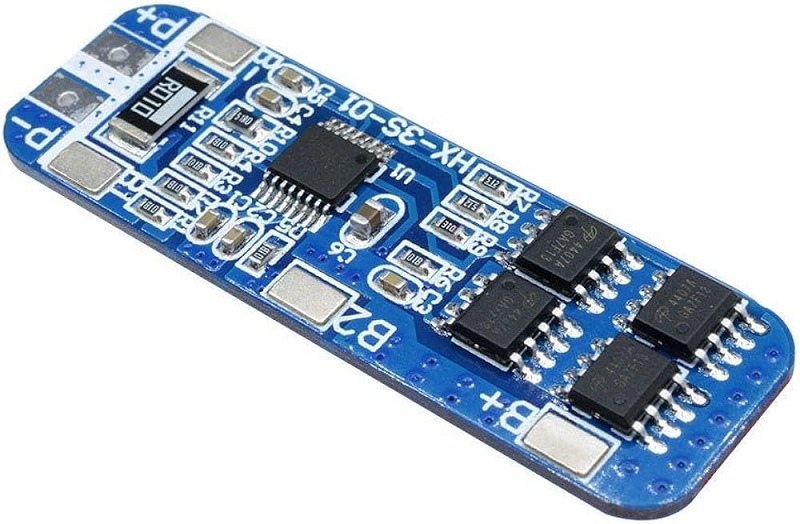Building Management Systems (BMS) are an integral part of modern infrastructure, offering seamless control and monitoring of various building systems. This article explores BMS in detail, delving into its functionality, components, advantages, and the latest trends in this transformative technology.
Table of Contents
What Is a Building Management System (BMS)?
A Building Management System (BMS), also known as a Building Automation System (BAS), is a centralized platform designed to monitor, control, and optimize a building’s essential systems. These systems can include:
- HVAC (Heating, Ventilation, and Air Conditioning)
- Lighting
- Power systems
- Security and surveillance
- Fire safety systems
Key Features of BMS
- Centralized Control: A BMS consolidates multiple systems into one unified interface, allowing operators to manage all operations seamlessly.
- Real-Time Monitoring: Continuous tracking of system performance and energy usage ensures operational efficiency.
- Automation Capabilities: Automates repetitive tasks such as adjusting HVAC settings or turning off lights during off-hours.
- Data Collection and Analysis: BMS generates detailed reports on energy consumption, system performance, and environmental conditions.
Components of a BMS
Understanding the components of a BMS provides insight into its functionality. The key elements include:
1. Sensors
Sensors collect data on various environmental factors such as temperature, humidity, light intensity, and occupancy. Common sensor types include:
- Temperature Sensors: Monitor and regulate heating and cooling systems.
- Motion Sensors: Detect movement to control lighting and security systems.
- Smoke and Fire Sensors: Essential for fire safety mechanisms.
2. Controllers
Controllers process the data received from sensors and execute commands to maintain optimal conditions. These devices act as the “brain” of the BMS, ensuring smooth operations.
3. User Interface
The user interface allows operators to interact with the system. It provides dashboards, control panels, and alerts for easy management of building operations.
4. Networking Devices
Networking devices facilitate communication between sensors, controllers, and the user interface. These can include:
- Wired Connections: For secure and stable data transfer.
- Wireless Networks: Offering flexibility and ease of installation.
Benefits of Implementing a BMS
A well-designed BMS offers numerous advantages for building management, including:
1. Enhanced Energy Efficiency
By monitoring and optimizing energy usage, a BMS can significantly reduce utility bills. Automated systems adjust lighting, heating, and cooling based on occupancy, minimizing waste.
2. Improved Comfort
BMS ensures that indoor conditions remain comfortable for occupants by maintaining optimal temperature, humidity, and air quality levels.
3. Increased Security
Integrated surveillance and access control systems enhance building security. Features such as motion detection, intrusion alarms, and CCTV monitoring are commonly included.
4. Cost Savings
Automation and efficiency improvements lead to lower operational and maintenance costs over time.
5. Environmental Sustainability
Energy-efficient systems contribute to a reduced carbon footprint, aligning with sustainability goals.
Applications of BMS in Different Sectors
BMS technology is versatile and widely adopted across various sectors. Here are some key applications:
1. Commercial Buildings
In office spaces and shopping malls, BMS optimizes lighting, HVAC, and security systems to enhance productivity and customer experience.
2. Residential Complexes
Smart homes utilize BMS for automation, ensuring convenience and energy savings for homeowners.
3. Industrial Facilities
Manufacturing plants benefit from BMS by maintaining strict environmental conditions and monitoring energy consumption.
4. Hospitals and Healthcare
BMS plays a critical role in maintaining hygiene and comfort in sensitive environments such as operating rooms and laboratories.
5. Educational Institutions
Universities and schools use BMS to create energy-efficient campuses while ensuring student safety and comfort.
Latest Trends in Building Management Systems
The evolution of BMS technology is driven by advancements in IoT, AI, and sustainability efforts. Here are some emerging trends:
1. Integration with IoT
The Internet of Things (IoT) enables devices to communicate and share data seamlessly, enhancing the capabilities of BMS. For example, smart sensors provide granular data for real-time adjustments.
2. Artificial Intelligence and Machine Learning
AI algorithms analyze data collected by BMS to predict maintenance needs and optimize operations. Machine learning enables systems to adapt to user behavior and environmental changes.
3. Cloud-Based BMS
Cloud computing allows for remote monitoring and control of building systems. This approach reduces the need for on-site infrastructure and simplifies system updates.
4. Focus on Cybersecurity
As BMS systems become more connected, ensuring robust cybersecurity measures is paramount to protect against potential breaches.
5. Sustainable Building Solutions
Green building initiatives emphasize energy efficiency and reduced emissions. Modern BMS systems are designed to support these goals.
Challenges in BMS Implementation
While the benefits of BMS are significant, there are challenges associated with its implementation:
1. High Initial Costs
The upfront investment in hardware, software, and installation can be a barrier for some organizations.
2. Complexity of Integration
Integrating a BMS with existing systems requires careful planning and expertise to ensure compatibility.
3. Maintenance Requirements
Regular maintenance and updates are necessary to keep the system running efficiently, which can add to operational costs.
4. Data Privacy Concerns
As BMS systems collect extensive data, ensuring privacy and compliance with regulations is critical.
Future of Building Management Systems
The future of BMS is bright, with advancements aimed at enhancing user experience and sustainability. Key developments to watch for include:
1. Smart Cities
BMS systems will play a crucial role in the development of smart cities, where interconnected buildings contribute to overall urban efficiency.
2. Personalized Environments
With AI, future BMS solutions may provide highly personalized indoor conditions tailored to individual preferences.
3. Net-Zero Energy Buildings
BMS will be instrumental in achieving net-zero energy buildings by optimizing energy use and integrating renewable energy sources.
4. Enhanced Scalability
Future systems will offer greater scalability, making them suitable for buildings of all sizes and types.
Conclusion
Building Management Systems represent a cornerstone of modern infrastructure, combining technology and innovation to create smarter, more sustainable buildings. By integrating various systems and automating operations, BMS enhances efficiency, comfort, and security. As the technology continues to evolve, it promises to redefine the way we interact with our built environments.
For organizations seeking to improve operational efficiency and reduce environmental impact, investing in a BMS is a forward-thinking decision. The benefits far outweigh the challenges, making BMS a vital component of contemporary building management.


